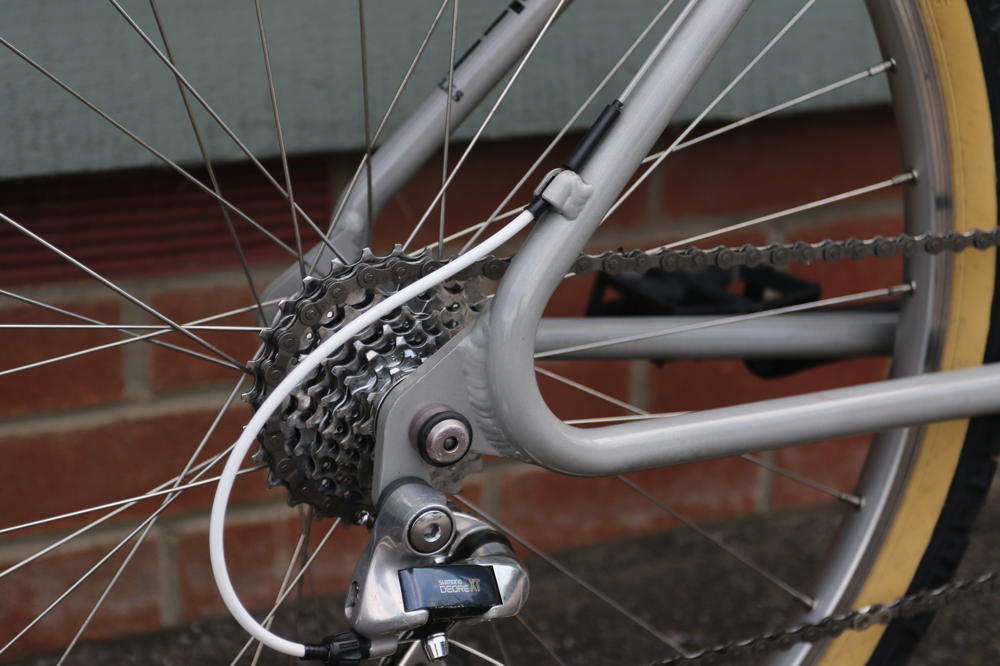Do high-end hardtails still have a place in mountain biking? Yeti certainly thinks so
Yeti re-launch the famous Yeti Arc just four years after ditching it – there are four builds to pick from and a limited-run anniversary edition for an amazing £8,999.
>>> Best hardtail mountain bikes in 2020 under £375, £500, £750 and £1000
The original ARC first appeared in 1991, its name an acronym for Alloy Racing Composite: Made from Easton’s high tech 7,000 series aluminium, it weighed less than half that of the competition and carried the likes of Missy Giove and John Tomac to the top of the podium.

The new Arc comes in two grades of carbon, top end Turq or regular Carbon. Both come in either turquoise or black, and the frame features bottle bosses inside and outside the front triangle, internal routing and chainstay and seatstay protection. The Arc T2 here comes with Fox Factory 34 fork with 130mm travel, and 29in DT Swiss XM1700 rims with 2.6in Maxxis Minion DHF and Rekon tyres for rolling speed. SRAM X1 Eagle 32t crankset, X01 mech, shifter and cassette. Fox Transfer dropper post, Yeti carbon 760mm bar, Race Face Aeffect stem, WTB Silverado saddle, and SRAM Level TLM brakes with 180mm rotors.
The Yeti ARC in 2020
Naturally the new bike has switched to the latest high-tech material, carbon (although Yeti did experiment with the dark stuff in its early days – who remembers the C26?), and it has modernised the rest of the bike too. Yeti splits its bikes into Carbon and Turq options where both are made from carbon, but Turq uses stronger fibres, so less material can be used, and the end result is a lighter frame.
The ARC uses 29in wheels and the geometry is designed to work with a 130mm travel suspension fork. Still, it’s surprisingly conservative, with the size large coming with a modest 465mm reach and 1,194mm wheelbase, while the head angle is 67º – not exactly racy, but nowhere near as relaxed as we’ve come to expect on modern trail hardtails.
What was it then that drew Yeti away from hardtails? “We wanted to focus on what really excited us, and that was full-suspension,” explains Ryan Thornberry from Yeti. At that point the brand had recently launched its Switch Infinity technology, which allowed the main suspension pivot to move up and down through the bike’s travel.
Eventually demand for a simpler bike brought a hardtail back to the table, and Ryan says the 35 year anniversary of the brand was the perfect time to bring back the ARC. “We’ve been so focused on full-suspension for so long, we had to relearn how to make a hardtail,” he says.
What he means is that times have changed and hardtails have evolved. Now trail hardtails don’t simply mimic their racing counterparts. It’s not the lightest bike possible anymore, instead it’s been designed as a playful bike. All the builds come with a dropper post, and the internal routing is secured at both ends to stop rattling, with moulded chainstay protectors for a quiet ride – all this adds convenience and weight, Ryan says.
Building the Arc
The Arc comes in four builds in the UK, plus the limited edition bike. There are two Carbon bikes, C1 and C2, costing £3,799 and £4,099 respectively, and two Turq bikes – the T1 is £4,799 and the T2 costs £5,199. The Carbon bikes get a basic Fox 34 and either Shimano SLX on the C1 or SRAM GX on the C2. Turq bikes get the top end Factory-level Fox 34 and Shimano XT on the T1 or SRAM X01 aboard the T2.

Arc de triomphe
This is the original Arc from 1991, imported from the US around seven years ago by retro bike collector Steff Dobke. He bought the frame and fork for around £1,000 and built it up with genuine parts from 30 years ago. “I do ride the retro bikes some times, once it’s up and built,” Steff says. “They’re a bit like classic cars, a bit sketchy but I like the nostalgia – I wanted these bikes when I was younger. Modern bikes will do everything ten times better though.”

Steff has ordered the new Arc as a frame only, and will build it up with a retro-inspired look. Naturally. “I’ll get some Fox 36s painted in that neon yellow, then geekily I’ve already got some new Onza Porcupine tyres to put on, they’ll just make it look a bit dated,” he says. “Then I have some original decals from the 90s and an old Yeti head badge I can put on.”




